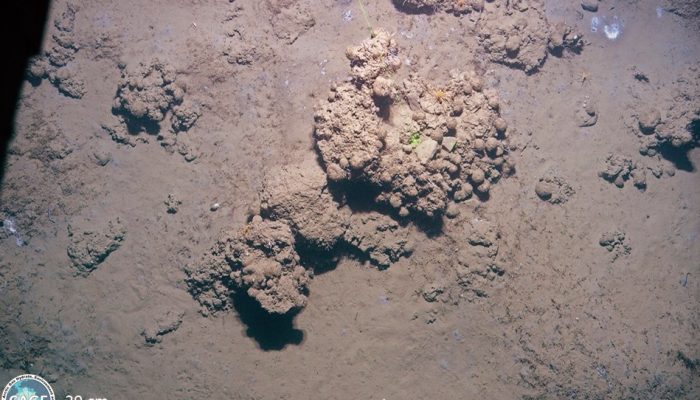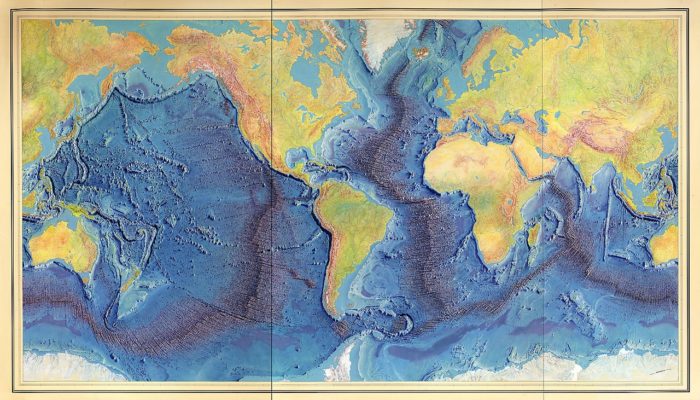The seafloor mapping pioneered by Marie Tharp, an American geologist and cartographer, though originally underappreciated, ended up playing a key role in the acceptance of the theory of plate tectonics. This week the EGU is highlighting Tharp’s groundbreaking contributions by hosting both a press conference and a session in her honour at the Union’s virtual annual meeting, Sharing Geoscience Onlin ...[Read More]
Methane seeps – oases in the deep Arctic Ocean

The deep Arctic Ocean is not known for its wildlife. 1200 metres from the surface, well beyond where light penetrates the water and at temperatures below zero, it it’s a desolate, hostile environment. There are, however, exceptions to this, most notably around seeps in the seafloor that leak methane into the water above. Here, methane is the fuel for life, not sunlight, creating oases in an otherw ...[Read More]
Geosciences Column: Stitching the seafloor together
You’re standing on a mountain peak, with a fabulous field site before you. Wanting to capture the moment, you take out your iPhone, snap a dozen pictures and your mobile stitches them together beautifully – a nice record to show your colleagues back in the office. Unfortunately, not all field sites are so easy to capture – especially when you need to do a little science with the images. Seafloor p ...[Read More]

